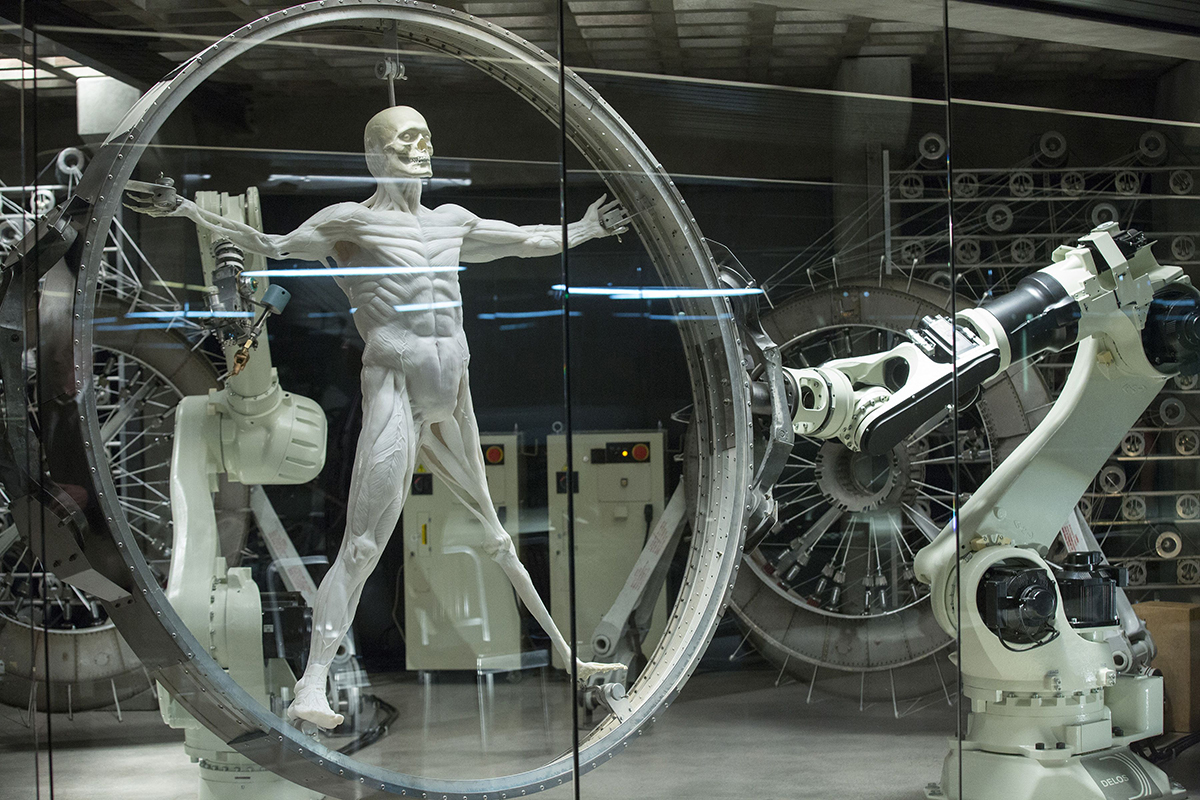newscientist Technology

Originally shared by A. Christopher
newscientist Technology
ROBOT SKIN SENSES WARM BODIES LIKE A SNAKE LOCATING NEARBY PREY
A heat-sensing film could let robots detect when humans are around, like pit vipers hunting out warm-blooded prey.
The flexible, transparent coating is made of pectin, a low-cost plant material used to set jam. Unlike conventional electronics, it relies on currents of ions rather than electrons to detect temperature variations – just like natural membranes used by the snakes.
The film can sense temperature changes as small as 10 millikelvin, which is twice as sensitive as human skin. It can detect a warm body the size of a rabbit from a metre away, something the researchers tested by microwaving a teddy bear and setting it at different distances from the film. Changes in temperature cause the film’s resistance to vary, which is picked up by electrodes along the edges and transmitted to a computer.
Applying it over a robot’s entire body could provide 360° thermal sensing, says Raffaele Di Giacomo at ETH Zurich in Switzerland, who led the research. That could help machines navigate crowded areas without hitting people, or help search and rescue robots locate humans in rubble or smoke-filled rooms. It could also help them to avoid damage and be more helpful to people. A robot assistant might need to know if a cup of tea is too hot to hand over, for example.
For Di Giacomo, helping robots learn about their environment is key. “The most important thing about combining AI and humanoid robots is that this AI needs to be shaped by its senses like we are,” he says. “You need to provide full sensory feedback so the AI can build up a picture of the world.”
Sensory feedback
The temperature-sensitive film could also be used in prostheses to help give the wearer sensory feedback.
Unlike previous flexible heat sensors, the membrane is sensitive across a broad temperature range and is very simple to make. The researchers cast pectin in a mould and then dipped it in calcium chloride, as the calcium ions make the pectin sensitive to heat changes. The signals from the electrodes along the film’s edges can pinpoint heat sources, and the team is now developing algorithms to map temperature across complex surfaces like body parts.
Di Giacomo says the film could also be sprayed or dip-coated – like the “skin dip” used to coat robots in the TV series Westworld – to give almost any object temperature-sensing capabilities.
“The sensitivity of the sensor is remarkable,” says Zhenan Bao at Stanford University in California, who has developed her own electronic skin.
The skin dip approach looks feasible, she says, but incorporating the film into a multi-purpose synthetic skin with flexible and rigid components may be challenging.
By Edd Gent
Source: goo.gl/8d1oZ7
#Robots #Robotics #Technology
Westworld-style ‘skin dips’ could apply the film
Bad Robot/REX/Shutterstock
